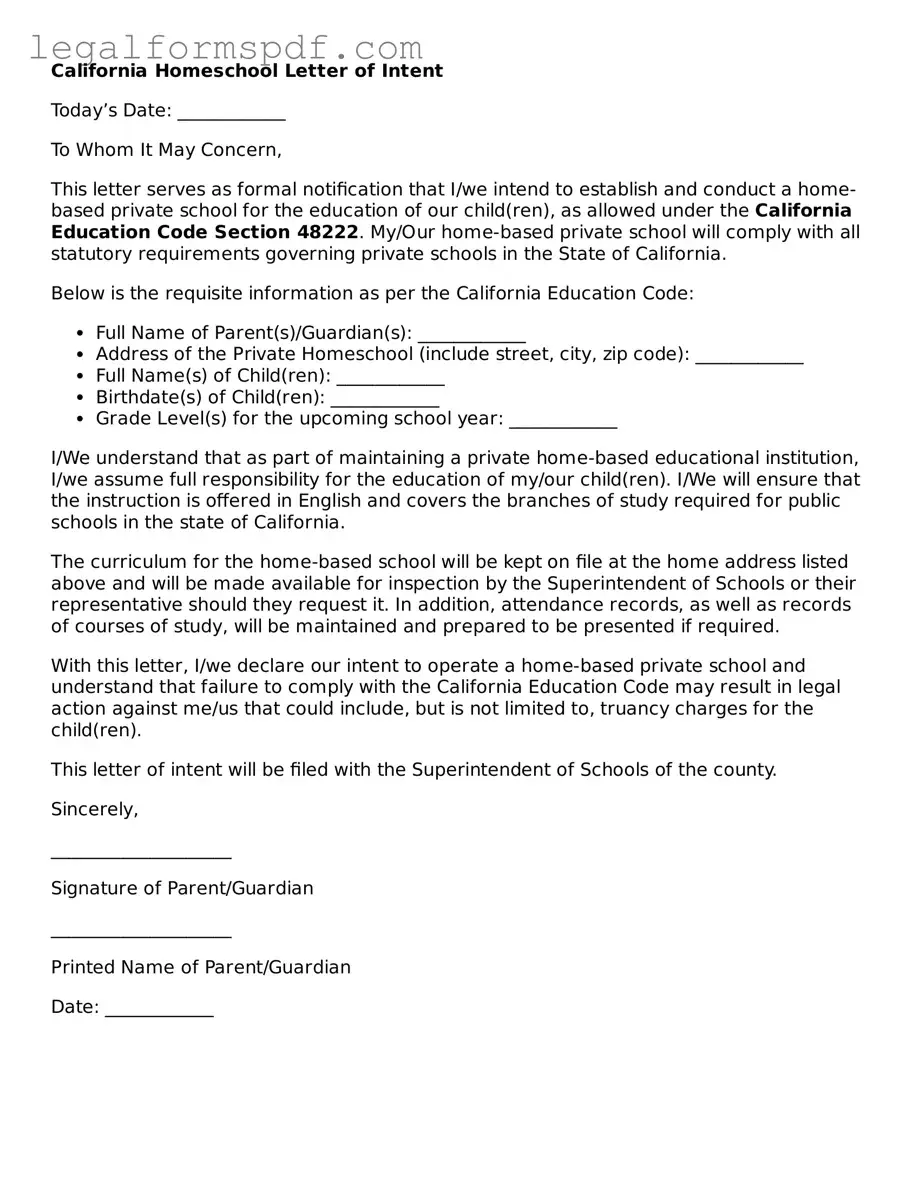What is the California Homeschool Letter of Intent form?
The California Homeschool Letter of Intent form is a document that parents or guardians are required to file if they choose to homeschool their child. This form is essentially a notification to the local school district that the child will not be attending public school and will instead be receiving an education through homeschooling. This step is crucial for ensuring that the homeschooling arrangement complies with California's education laws.
When do I need to submit the California Homeschool Letter of Intent form?
The form should be submitted at the beginning of each academic year for which the child will be homeschooled, typically by the 15th of September or within 14 days from the start of a homeschool program if initiating homeschooling mid-year. It's essential to adhere to these timelines to avoid any legal issues related to truancy or educational neglect.
Who needs to file a California Homeschool Letter of Intent form?
Any parent or guardian who opts to homeschool their child or children in California needs to file this form. Whether you're planning on teaching one child or multiple children at home, a form for each child should be submitted to the respective local school district.
How do I submit the California Homeschool Letter of Intent form?
The form can be submitted either by mailing a hard copy to the superintendent's office of your local school district or, in some cases, by submitting it online if the district offers that option. It's advisable to keep a copy of the form and any corresponding communication for your records.
What information is required on the California Homeschool Letter of Intent form?
The form typically asks for basic information about the child being homeschooled, such as their name, age, and grade level, as well as the address where the homeschooling will take place. It also requires details about the educational program being used, including the name of the school (if you are creating a private school for your child) and the type of curriculum.
Is there a fee to file the California Homeschool Letter of Intent form?
No, there is no fee required to file the California Homeschool Letter of Intent form. The process is designed to be accessible for all families choosing to homeschool, ensuring that every child in California has the opportunity to receive an education in a way that best fits their needs.
What happens after I submit the form?
After the form is submitted, the local school district will acknowledge receipt and provide you with any additional information you might need regarding the legal obligations of homeschooling in California. It's a good idea to stay in contact with the school district to ensure that you're aware of any changes in homeschooling regulations or requirements.
Can I withdraw my California Homeschool Letter of Intent?
Yes, if you decide to enroll your child in public school or pursue a different education option, you can withdraw your Homeschool Letter of Intent. To do this, contact your local school district directly to inform them of the change and follow any procedures they have for re-enrolling your child in public schooling.
